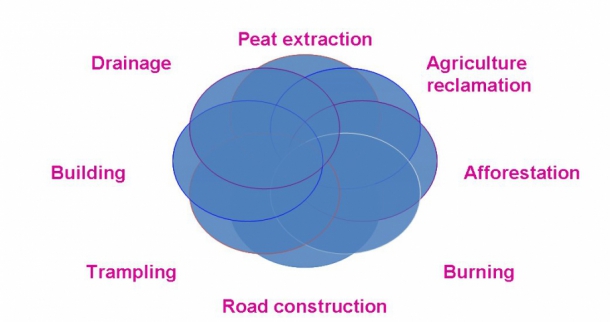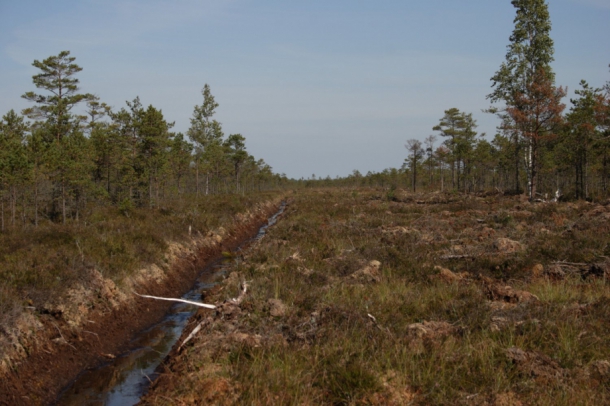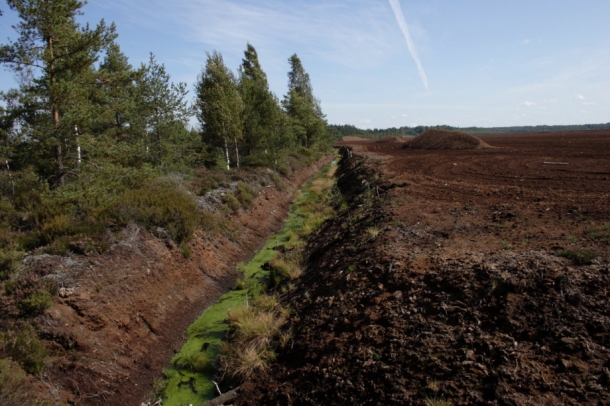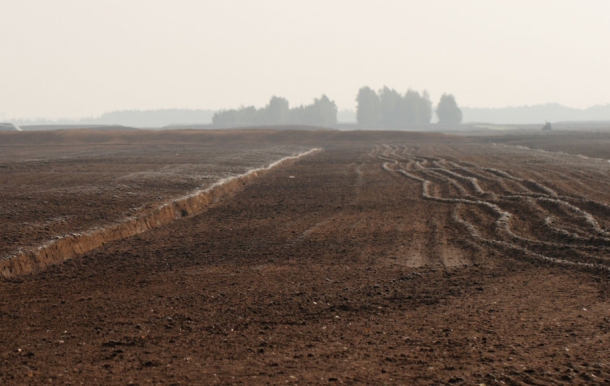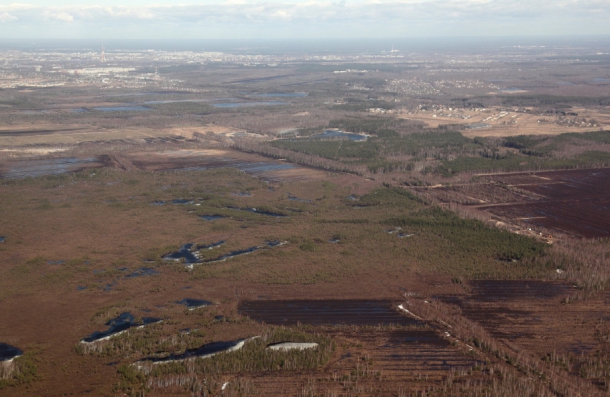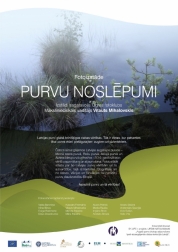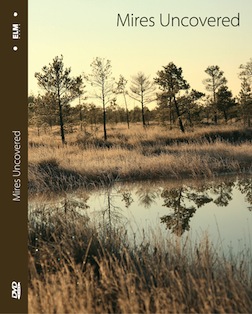What influences them
Impact to mires
At present, human activities have left an impact not only on mire ecosystems, but also to the neighboring ones, like forests, rivers and lakes. Mires tell also about the present human influence that finds reflection in the transformed plant cover of mires, as well as plant species composition and vegetation structure. Mires are influenced mostly by drainage for peat extraction, agriculture and forestry. In addition, fires (burning) in mires and in margins of lakes, and beaver activity change the mire vegetation, as well as lake and agricultural land eutrophication and pollution with household waste. Other direct impacts on mires emerge from tree cutting around springs and illegal deforestation in nature reserves as well as building, road construction and riverbed control.
Negative human impact on mire vegetation and habitats comes also from water reservoir building and paludification of wide areas in river valleys, trampling during picking berries and illegal geese hunting in their resting places. There are studies that also acid rains and heavy metals affect mires.
Changes in mires due to negative influence
Negative influence in mires can be observed as change of the mire hydrological regime, degradation of mire vegetation, loss of the plant communities and species diversity, change of raised bog structure (hummocks, bog pools and lakes), decrease of the total area of the mires, and changes in mire water quality. Cover of Sphagnum decreases as mire becomes drier, and development of dense moss cover stops. As a result, part of hydrophilous plant species disappears and new plants that are not typical for mires appear. Carpet of heather Calluna vulgaris becomes denser.
Mire hydrology changes and peat accumulation is not observed anymore after peat extraction and mire drainage. Previous mire conditions and its natural vegetation are not possible to renew. Previous plants have been replaced by degraded vegetation, part of water-loving plant species disappear from territory. Protected mire habitats are endangered by peat extraction even now. The most exploited by humans are fens. Mostly they are used to agriculture reclamation and peat has been extracted only rarely from fens. Part of transformed fens has overgrown after decrease of agriculture intensity.
Beaver activities in mires can be recognized by the presence of dams and paludificated territory. As a result, rare and protected plant species and habitats disappear from there. Fens are mostly endangered by overgrowing of bushes. Mire vegetation is also affected by lake eutrophication. Mire vegetation renewal has occurred in some places, for example, in previous peat extraction sites in Ziemeļvidzeme Biospfere Reserve.

